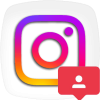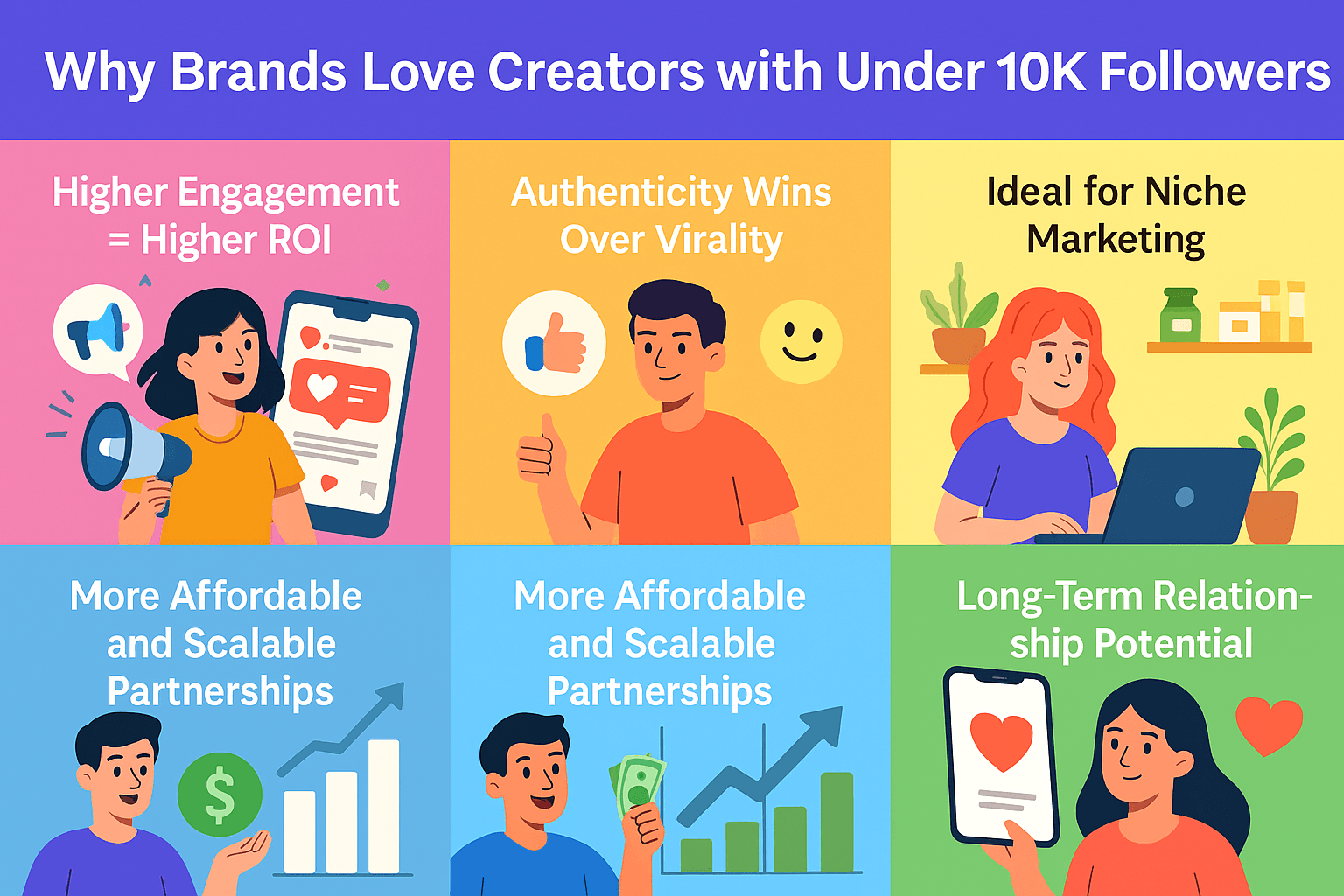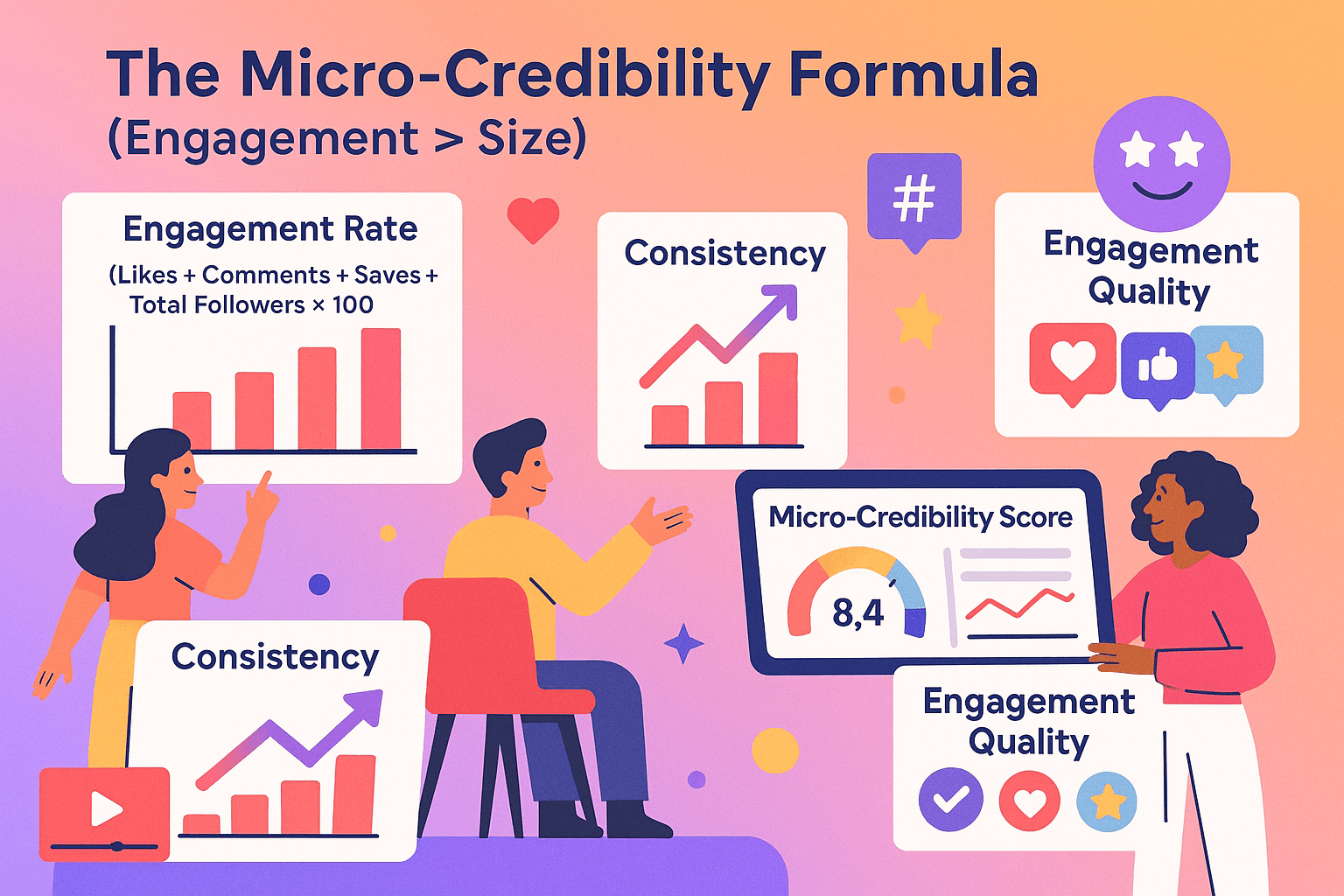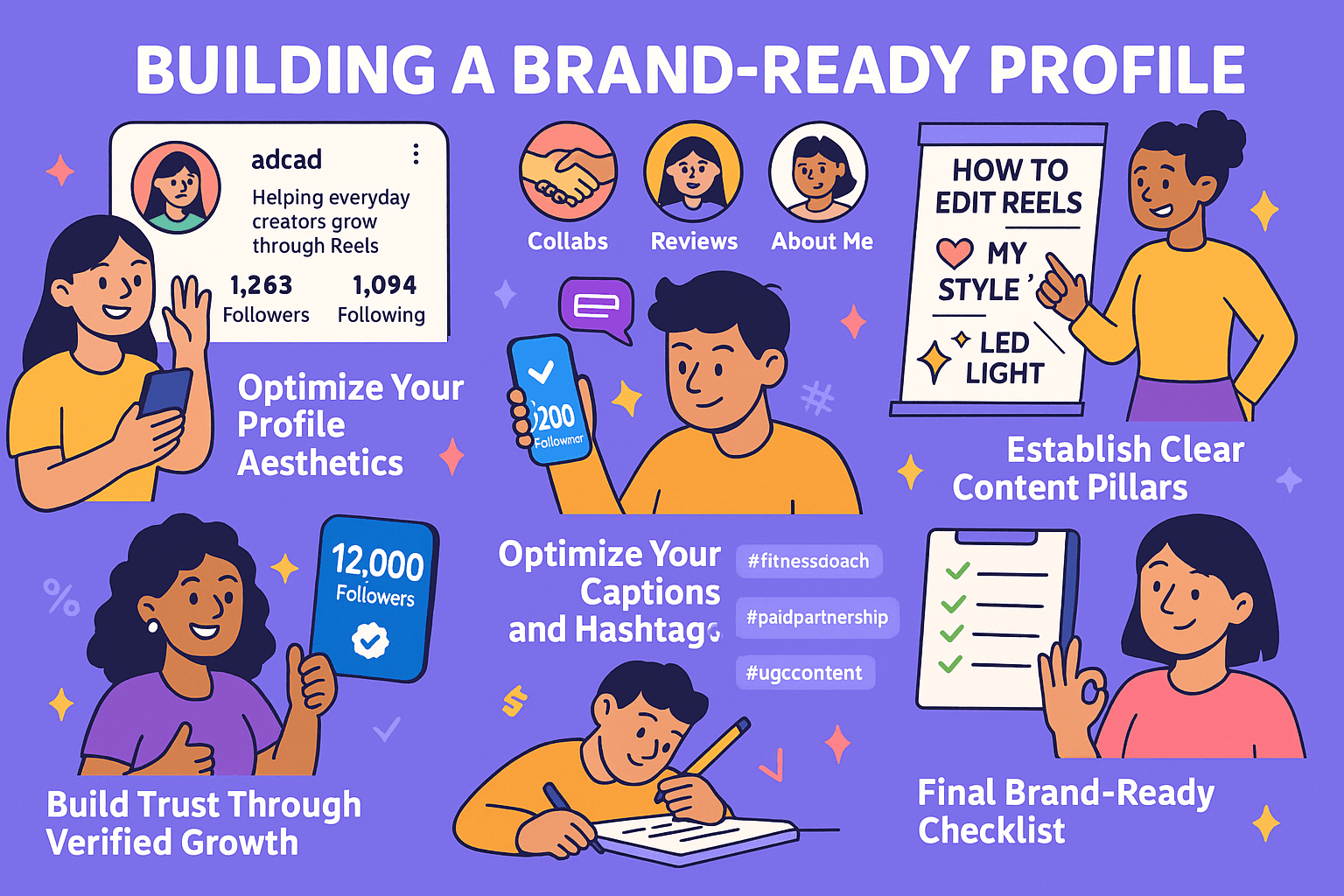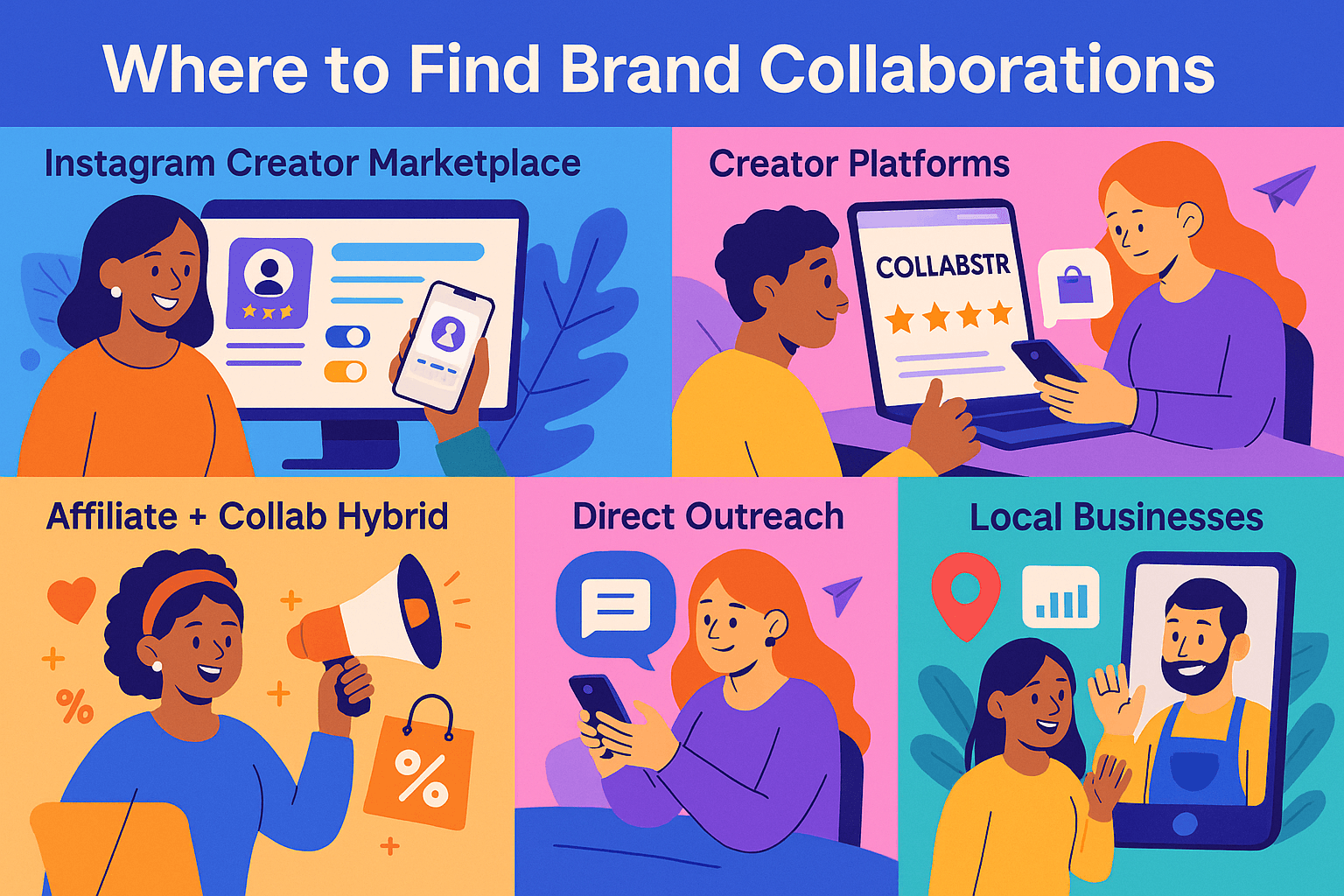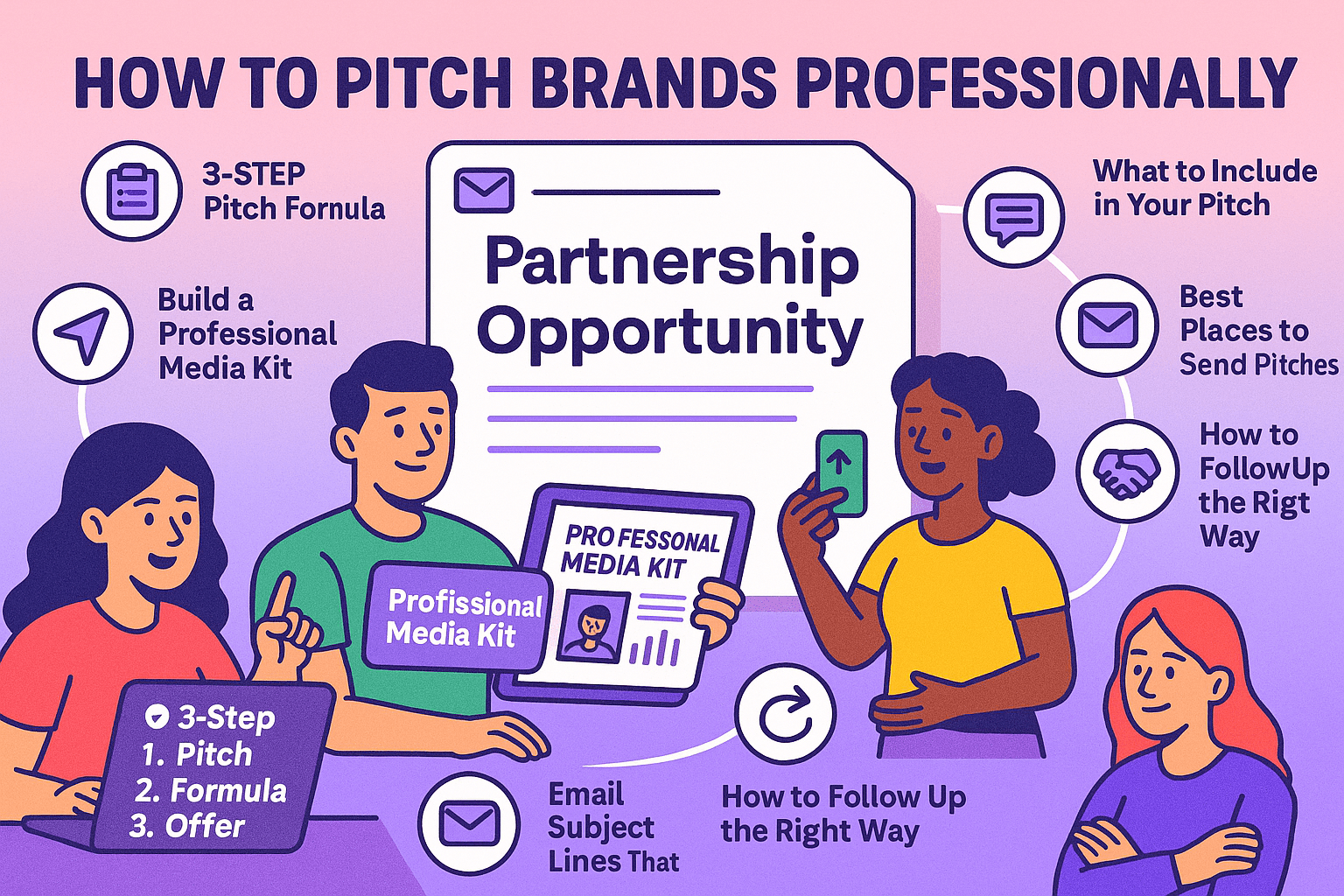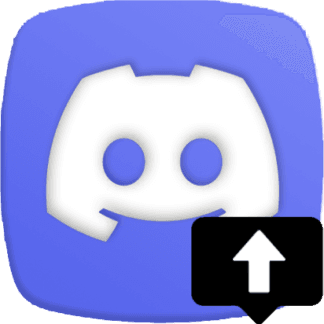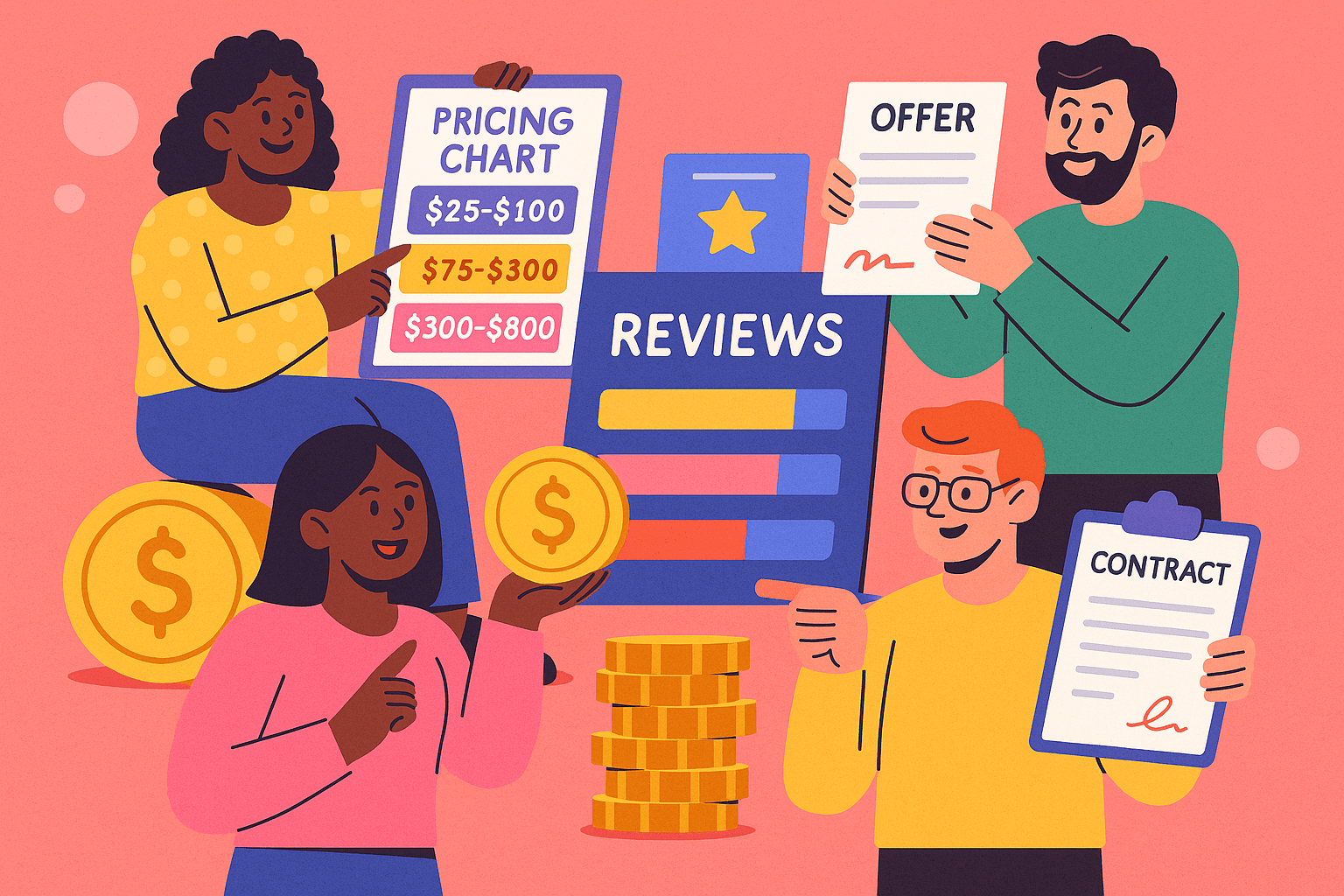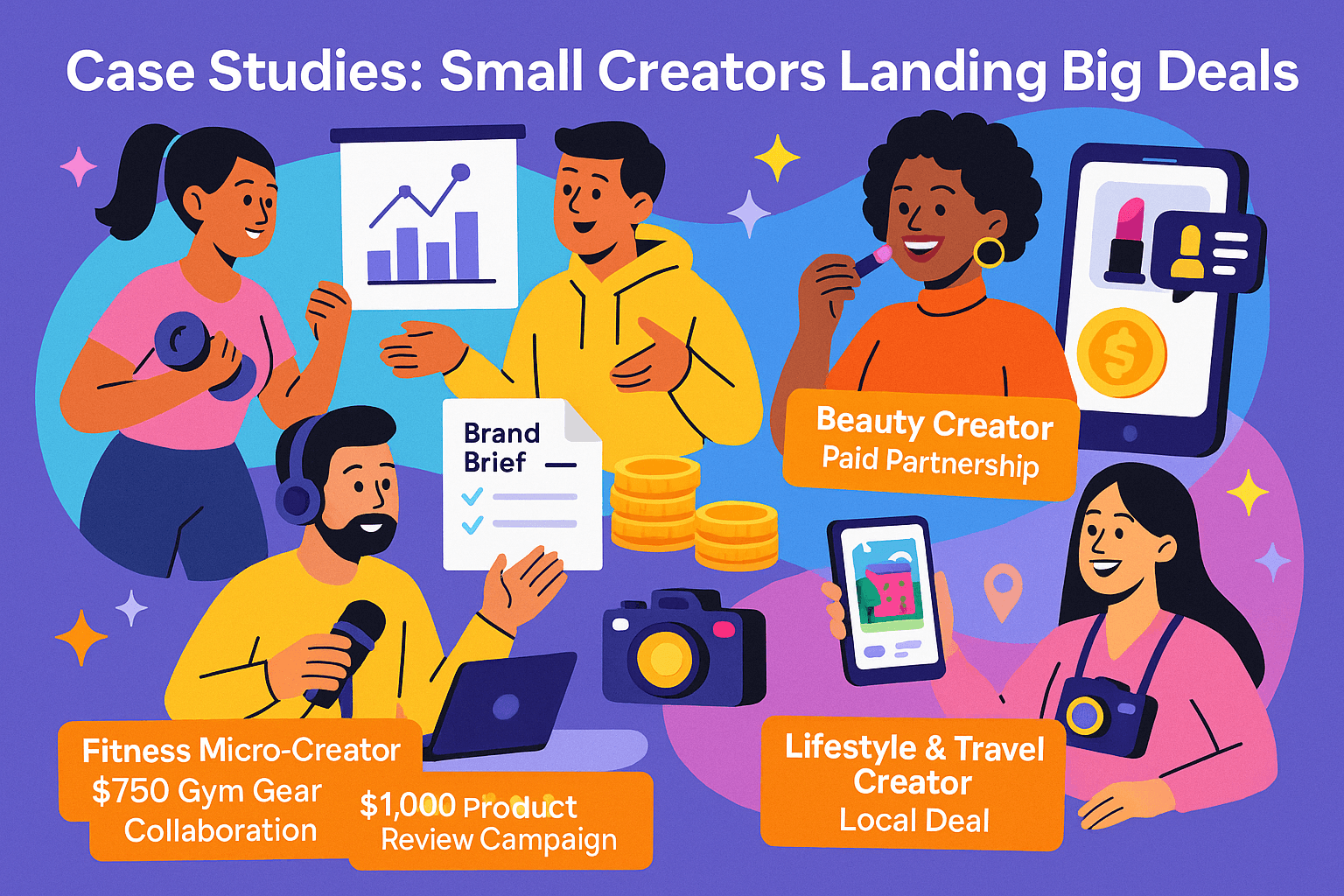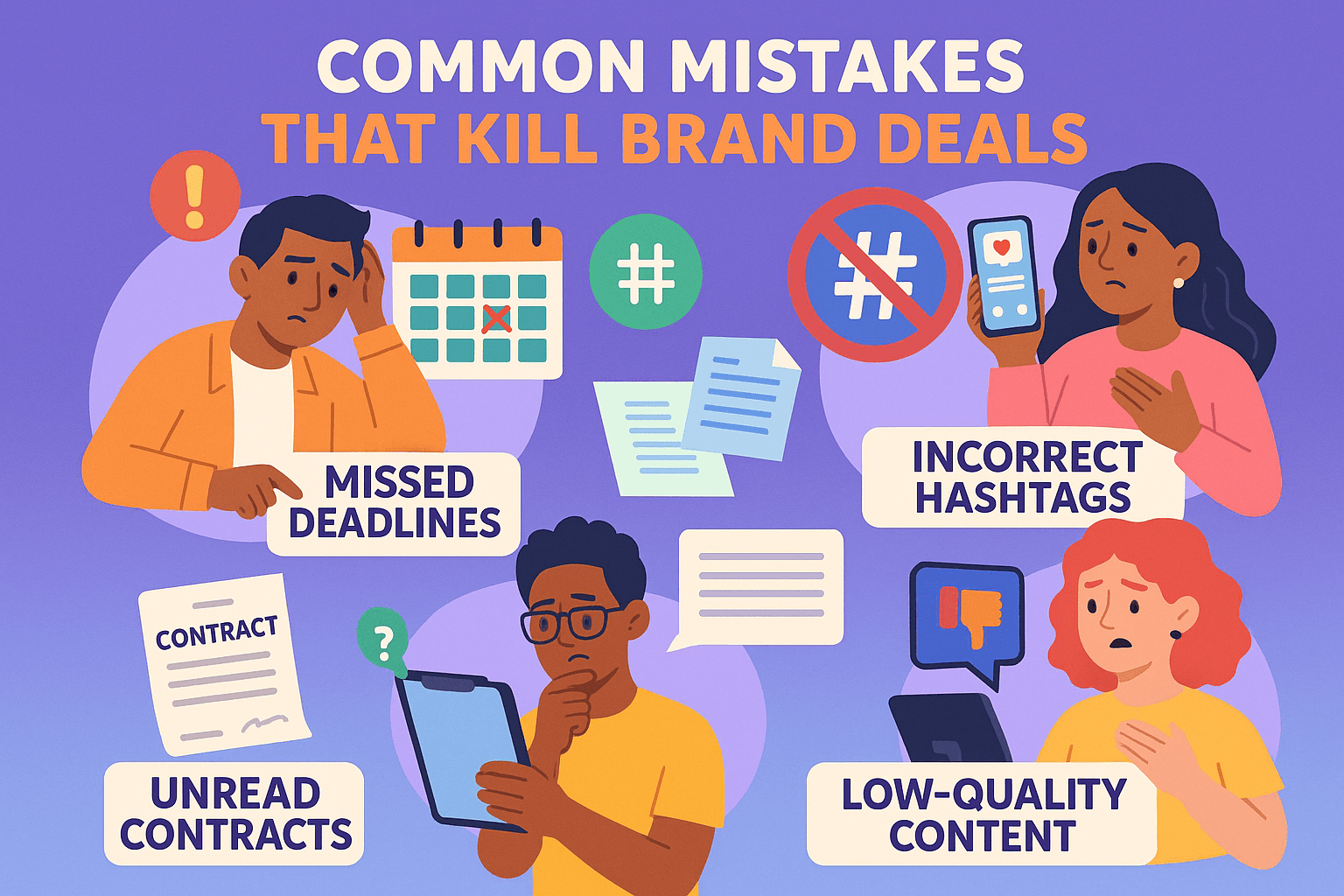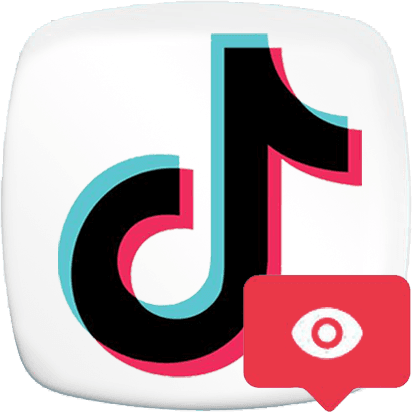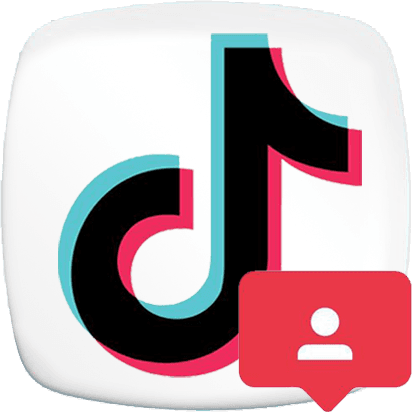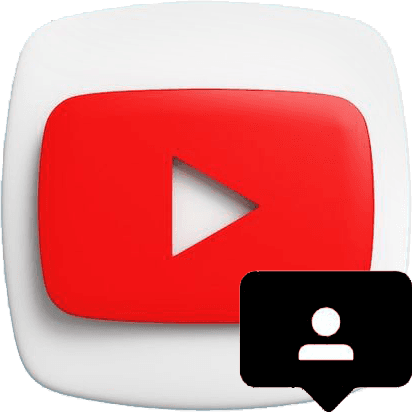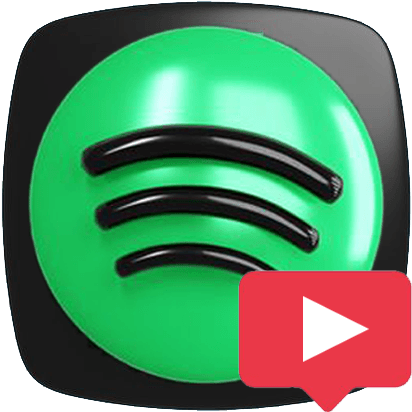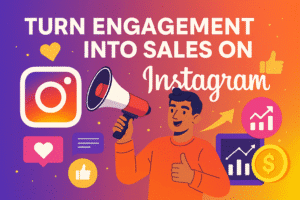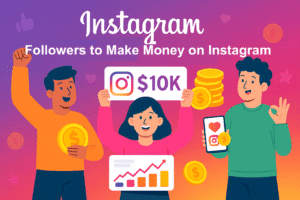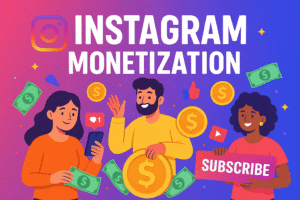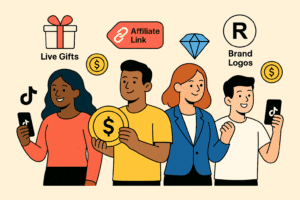Why Brands Love Creators with Under 10K Followers
Brands used to chase influencers with hundreds of thousands of followers — until the data told a different story. By 2026, small creators with under 10K followers, known as nano and micro influencers, have become the most valuable partners in digital marketing. They bring something big creators often can’t — authentic connection and measurable trust.
1. Higher Engagement = Higher ROI
According to 2026 Meta Brand Insights, nano creators (1K–10K followers) generate 2.8× more engagement per post than macro influencers. Their audiences actually comment, reply, and take action — leading to better reach-to-sale ratios for sponsored campaigns.
| Creator Type | Follower Range | Average Engagement Rate | Estimated Conversion Rate |
|---|---|---|---|
| Nano Creator | 1K – 10K | 6% – 10% | 4% – 8% |
| Micro Creator | 10K – 50K | 4% – 6% | 3% – 5% |
| Macro Creator | 100K+ | 1% – 3% | 0.5% – 1.5% |
For brands, that engagement translates directly to return on investment (ROI). A small creator with 5K loyal followers can generate more sales than a celebrity with 500K passive ones — because trust drives action more than fame.
2. Authenticity Wins Over Virality
Audiences today crave real stories, not perfect aesthetics. Nano creators tend to share honest product experiences — they film in natural lighting, speak casually, and interact directly in comments. This level of authenticity gives brands access to organic word-of-mouth marketing that feels genuine, not sponsored.
According to HypeAuditor’s 2025 survey, 72% of consumers said they’re more likely to buy a product promoted by a small creator they relate to than by a celebrity influencer.
3. Ideal for Niche Marketing
Brands are now prioritizing niche audiences over mass exposure. Creators under 10K followers usually specialize — whether it’s skincare for men, digital nomad travel, or gym gear for beginners. That focus helps brands reach pre-qualified, conversion-ready audiences instead of general traffic.
- Beauty brands partner with skincare enthusiasts sharing honest results.
- Tech brands collaborate with gadget reviewers who explain features clearly.
- Fitness brands sponsor small creators who show real progress, not just aesthetics.
4. More Affordable and Scalable Partnerships
Working with multiple small creators allows brands to spread budget efficiently. Instead of paying $5,000 for a single macro post, they can partner with 10 micro creators for $300 each — reaching 10 diverse audiences with higher trust levels.
This “multi-creator model” is one reason why platforms like Collabstr and Meta’s Creator Marketplace have seen a 42% increase in brand signups for micro campaigns since 2025.
5. Long-Term Relationship Potential
Brands love collaborating with creators who genuinely use and believe in their products. Nano creators often evolve into long-term ambassadors — building an authentic brand story over time instead of one-off posts. These relationships lead to consistent income and future collaborations with bigger companies.
small creators have become marketing gold for brands. Their combination of trust, engagement, and niche precision delivers results that big influencers can’t replicate — and 2026 is the year this shift officially became mainstream.
The Micro-Credibility Formula
(Engagement > Size)
In 2026, brand partnerships are no longer decided by follower count — they’re earned through measurable micro-credibility. This term describes the balance between engagement quality, audience relevance, and content consistency. Simply put: brands now ask, “How much influence do you have per 1,000 followers?” instead of “How many followers do you have in total?”
1. Understanding the Engagement Equation
Engagement is the heartbeat of your credibility. It tells brands that your followers don’t just scroll — they react, reply, save, and buy. You can calculate your engagement rate with a simple formula:
(Likes + Comments + Saves + Shares) ÷ Total Followers × 100A healthy engagement rate for creators under 10K followers sits between 6% and 10%. Anything above 8% is considered “brand-ready.” This rate can outweigh even large creators with 1–2% engagement, because it reflects an active, trusting audience.
| Follower Range | Ideal Engagement Rate | Brand Collaboration Score (Est.) |
|---|---|---|
| 1,000 – 3,000 | 8% – 12% | High |
| 3,000 – 7,000 | 6% – 9% | Very High |
| 7,000 – 10,000 | 5% – 8% | Excellent |
Brands use this data to gauge how “alive” your community is. A 2,000-follower creator with 10% engagement can outperform a 50K influencer with 1.5% engagement in conversion rate.
2. The Consistency Multiplier
Posting frequency and content rhythm also impact your micro-credibility score. Instagram’s internal algorithm rewards creators who post consistently (at least 3 times per week) and maintain a regular Story presence. When you’re active, you trigger a cycle of re-engagement that keeps your metrics high.
- Post Reels 2–4× per week using clear storytelling hooks.
- Use Stories daily to humanize your brand and show authenticity.
- Reply to comments and DMs within 24 hours — it signals responsiveness.
- Pin your best performing posts to reinforce your brand credibility for new visitors.
This rhythm creates an “always-on presence” — essential for attracting brands who value reliability as much as creativity.
3. Content Relevance Score (CRS)
Micro-credibility isn’t only about numbers — it’s about alignment. Your CRS measures how well your content matches the brand’s audience. It’s the reason a skincare brand prefers a 2K-follower creator who posts skin routines every week over a 50K fitness influencer who rarely discusses beauty.
Brands calculate this match using AI-powered insights inside the Instagram Creator Marketplace, reviewing metrics like:
- Topic alignment (hashtags and captions used)
- Audience location (Tier 1–3 GEO distribution)
- Demographics (age, interests, gender split)
- Product affinity (how often your audience engages with product-tagged posts)
The higher your content relevance, the more likely you’ll get inbound offers. To improve your CRS, build a clear content identity — stick to one or two niches, use branded hashtags, and feature consistent visual styles.
4. Engagement Quality Index (EQI)
Brands don’t just look at numbers — they analyze comment quality. Ten thoughtful replies are more powerful than 100 generic emojis. Instagram’s 2026 algorithm measures EQI by analyzing keywords in comment sentiment, depth of replies, and response patterns.
- High EQI: Comments include real questions or discussions about the product (“Where did you get this?” / “Does it work for dry skin?”).
- Medium EQI: Comments include short but positive reactions (“Love this!” / “So true!”).
- Low EQI: Spam, repeated emojis, or bot-like replies.
Maintaining EQI above 70% signals to brands that your engagement is authentic — a key factor when they decide between paying you or a bigger creator with fake followers.
5. The Micro-Credibility Score Formula
Combine your engagement rate, consistency, relevance, and EQI to create your Micro-Credibility Score (MCS). While Instagram doesn’t publicly display this, brands use similar weighted metrics internally.
MCS = (Engagement Rate × 0.4) + (Consistency Score × 0.2) + (Relevance × 0.25) + (EQI × 0.15)An MCS above 7.5/10 is considered brand-ready. Creators who maintain high MCS often receive direct outreach from brand managers — even without applying through a platform.
6. Boosting Your Micro-Credibility Fast
- Run an engagement campaign using verified Instagram likes to raise your post interaction velocity.
- Collaborate with another small creator in your niche for shared Reels or Lives.
- Focus on consistency and genuine comment interaction for 30 days — the algorithm reads this as “trust building.”
- Audit your followers monthly and remove inactive or fake ones using a cleanup tool.
With the right engagement strategy and consistent activity, even a 2K-follower creator can reach the same micro-credibility score as an influencer five times larger — and start receiving paid collaboration offers organically.
Building a Brand-Ready Profile
Before you start pitching to brands, your Instagram needs to look professional, trustworthy, and aligned with potential partners’ expectations. Think of your profile as a digital business card — it’s often the first (and only) impression that brand managers get before deciding whether to collaborate.
Even if you have under 10K followers, a strong profile can instantly communicate value, authenticity, and niche focus. Here’s how to structure every part of your Instagram to make it “brand-ready.”
1. Optimize Your Profile Aesthetics
Your profile photo, bio, and highlights act as your visual resume. Keep them clean, consistent, and visually aligned with your niche.
- Profile Picture: Use a clear, well-lit photo of yourself — avoid filters or text-heavy logos. It should communicate approachability and professionalism.
- Username: Keep it simple and consistent across platforms (e.g., @beautybylana or @techwithmike).
- Bio: In one line, state who you help and what content you create. Example: “Helping everyday creators grow through Reels + brand collabs 💡.”
- Contact Options: Add an email or “Message” button so brands can reach you easily — missing contact info is the #1 collaboration killer.
- Link in Bio: Use Linktree or Beacons to showcase your top Reels, collaborations, or affiliate content.
Pro Tip: Always highlight authenticity. A friendly face, human tone, and consistent colors can increase brand trust faster than follower count.
2. Design Strategic Story Highlights
Story highlights are often the first thing brands check after your bio. They show your consistency, creativity, and audience reaction — which matter more than follower numbers.
- “Collabs” Highlight: Showcase previous partnerships or UGC content you’ve created for brands.
- “Reviews” Highlight: Share positive feedback from followers about your promoted products.
- “About Me” Highlight: Introduce your niche, posting schedule, and mission.
- “Stats” Highlight: Feature your average reach, engagement rate, and audience demographics.
Even if you’ve never had a paid brand deal, create highlights that reflect readiness — such as “My Style,” “Product Reviews,” or “Audience Love.” This visual storytelling positions you as credible and organized.
3. Establish Clear Content Pillars
Brands look for creators with consistent themes. Instead of posting randomly, define 3–4 content pillars that align with your personality and future brand collaborations.
| Content Pillar | Example Posts | Brand Fit |
|---|---|---|
| Educational | “How I edit my Reels” or “3 tools every small creator needs.” | Tech, Creator Tools, Marketing Platforms |
| Personal Story | “What I learned from my first collab” or “Behind my content routine.” | Career, Lifestyle, Personal Development Brands |
| Showcase | “Testing the new LED light setup!” | Beauty, Fitness, E-commerce Gear |
| Community | Polls, Q&A, shoutouts to followers | Audience-Building and Engagement Brands |
Keep your color palette and captions consistent — this creates brand memory. Use simple design tools like Canva or CapCut templates for visual consistency.
4. Build Trust Through Verified Growth
Even if your engagement is strong, having a stable follower base adds instant credibility. Brands and algorithms both favor verified, active communities. If you’re still under 1K followers, boost your base safely with Verified Instagram Followers — ensuring organic-looking growth and engagement consistency.
Combine that with genuine content interactions — reply to comments, create polls, and share behind-the-scenes moments to show authenticity. Remember, authentic activity + verified stability = ideal collaboration profile.
5. Optimize Your Captions and Hashtags
Brands analyze your captions to see how you communicate. Write like you’re having a conversation — friendly, helpful, and relatable. Mix hashtags strategically:
- Use 3–5 niche hashtags (#beautycreator, #fitnesscoach, #techreviewer).
- Add 1–2 brand collaboration hashtags (#paidpartnership, #ugccontent).
- Include a call-to-action (CTA) that encourages replies (“Would you try this setup?”).
Strong captions build emotional connection — which increases your comment rate and boosts the “Engagement Quality Index” brands care about.
6. Final Brand-Ready Checklist
- Profile photo and bio match your niche
- Highlights show social proof and stats
- Content pillars are clear and consistent
- Captions are conversational, not robotic
- Follower base looks authentic and active
- You post Reels and Stories weekly
Your goal
make a brand feel confident that partnering with you will enhance their credibility — not just their reach.
Once your profile is brand-ready, the next step is finding where the right collaborations live. Let’s move into the practical side: where to find brand collaboration opportunities in 2026.
Where to Find Brand Collaborations
Once your profile looks professional, it’s time to start finding opportunities. Fortunately, in 2026, you don’t have to wait for brands to notice you — there are dozens of platforms and built-in tools where small creators can connect directly with brands ready to collaborate.
Instagram Creator Marketplace
(Official Meta Platform)
The Instagram Creator Marketplace is now the first stop for brands seeking authentic creators. It allows you to create a “Creator Portfolio” with your audience data, niche tags, and example Reels or Stories. Once approved, you’ll receive partnership offers directly in your Professional Dashboard → Monetization → Creator Marketplace tab.
- Ideal for creators with over 1K followers and active engagement (4%+).
- No fees or middlemen — you get paid directly through Meta Pay or PayPal.
- Brands can filter by region, niche, audience size, or engagement rate.
Regularly update your portfolio and post Reels with clear niche hashtags. The more aligned your tags, the higher your chances of appearing in brand searches.
Creator Collaboration Platforms
(Trusted Third Parties)
If you’re just starting, join external platforms that connect nano and micro influencers with brands. These sites often pay for UGC content, sponsored Reels, and product reviews — no large following required.
| Platform | Best For | Follower Requirement | Payment Type |
|---|---|---|---|
| Collabstr | Sponsored Reels, Story shoutouts, UGC deals | 1K+ | Direct PayPal or bank transfer |
| Aspire.io | Brand campaigns and affiliate partnerships | 5K+ | Bank or Stripe |
| Trend.io | Product-for-content collabs (e-commerce brands) | No minimum | Free products or fixed rate |
| Influence.co | Networking + brand discovery | Any size | Depends on campaign |
Joining multiple platforms maximizes your exposure. Keep your profiles identical — same bio, same niche, and same top-performing Reels for consistency.
Affiliate + Collab Hybrid Opportunities
Many brands now offer hybrid collaborations — a mix of affiliate earnings and flat-fee sponsorships. You can find these through platforms like:
- Amazon Influencer Program: Earn commissions through tagged storefronts.
- ShopMy + LTK (LikeToKnowIt): Ideal for fashion, beauty, and home decor creators.
- Impact + Rakuten Advertising: Great for tech, travel, and e-commerce creators.
Even if the initial pay is small, these programs build your credibility with data-backed performance. Brands love creators who can show “proof of conversions” from affiliate campaigns.
Direct Outreach — The Underrated Strategy
Never underestimate the power of reaching out directly. Many small businesses, especially in lifestyle, beauty, fitness, and tech niches, are eager to collaborate with creators under 10K followers — they just don’t know where to find you.
Here’s a simple 3-step outreach template that works in 2026:
Subject: Collaboration Idea for [Brand Name] 💡
Hi [Brand Team],
I’m [Your Name], a creator focused on [your niche] with an engaged audience of [X followers] and an average 7% engagement rate.
I’ve used your [specific product] and my audience loves this type of content.
Would you be open to a short UGC Reel or product feature?
I can share performance data and previous examples if helpful.
Thank you!
– [Your Name]
@YourHandle
Keep it short, warm, and specific — brand managers receive hundreds of DMs weekly, so personalization makes you stand out. Attach your media kit or link to your portfolio (a simple Google Drive or Notion page works).
Local & Niche Collaborations
Local businesses are the fastest-growing sponsor category in 2026 for nano influencers. Restaurants, gyms, salons, and local fashion stores often seek creators for UGC and shoutouts in exchange for payment or product perks.
Pro Tip: Search Instagram using hashtags like:
- #localbusiness + your city (#localbusinessLA, #tokyobrands)
- #collabwithme + your niche (#collabwithmebeauty, #collabwithmefitness)
- #brandcollaboration2026
Engage genuinely with those posts, leave meaningful comments, and DM businesses you align with. Many nano creators earn their first deals this way — before ever joining a marketplace.
Keep a Collaboration Tracker
Once you start connecting with brands, track every conversation, deliverable, and payment. Use a simple spreadsheet with columns like:
- Brand Name
- Campaign Type
- Agreed Rate / Commission
- Post Date & Performance
- Potential for Renewal
Brands love creators who stay organized and professional. If your content performs well and you deliver on time, many will return for repeat collaborations — turning one-off posts into long-term partnerships.
Now that you know where to find paid campaigns, let’s talk about how to pitch them — the 3-step formula that wins brand managers’ attention.
How to Pitch Brands Professionally
Finding collaboration opportunities is only half the battle — the real test is how you communicate. In 2026, brand managers receive hundreds of emails and DMs weekly from creators hoping to collaborate. To stand out, your pitch must feel personal, data-driven, and value-focused.
Even with under 10K followers, a well-written pitch can open doors to long-term partnerships if you show the right combination of professionalism and authenticity.
1. The 3-Step Pitch Formula
Every winning outreach message follows this simple but powerful structure:
| Step | Focus | Example |
|---|---|---|
| 1. Hook | Start with a personalized compliment or shared value. | “I’ve been using your skincare range for months — your new vitamin C serum fits perfectly with my audience’s routines.” |
| 2. Value | Share what makes your audience and content valuable. | “I focus on realistic product tutorials for busy professionals — my 7% engagement rate helps brands drive genuine conversation.” |
| 3. Offer | Propose a collaboration type and call to action. | “Would you be open to a short UGC Reel or mini review? I’d love to discuss ideas that fit your current campaigns.” |
Keep your tone confident but conversational — brands prefer creators who sound approachable, not transactional.
2. What to Include in Your Pitch
Brands want quick clarity. Within 150–200 words, your message should cover these essentials:
- Who you are and what niche you represent
- Your average engagement rate (not follower count)
- A short summary of your audience demographics
- A link to your best performing Reel or your media kit
- A friendly CTA — “Would you be open to exploring a small test campaign?”
Don’t attach large files in your first message. Instead, include a Notion, Canva, or Google Drive link to your media kit or sample work.
3. Build a Professional Media Kit
A media kit is your portfolio in one page — it proves you’re organized, brand-ready, and experienced. Even if you haven’t worked with brands yet, you can still create one showcasing your analytics and content style.
Your media kit should include:
- A short bio (niche, tone, and location)
- Audience stats (followers, engagement rate, demographics)
- Example posts or thumbnails of your best Reels
- Testimonials or comments from your audience (social proof)
- Collaboration packages (Reel + Story, Review + Giveaway, etc.)
Pro Tip: Use templates from Canva or Visme to design your kit. A professional layout can make even new creators look established and credible.
4. Best Places to Send Pitches
Choose your contact channel carefully — brands have different preferences depending on company size:
- Small businesses: Direct DM or comment interaction first, then move to email.
- Mid-size brands: Email via website “Contact” or PR department.
- Large companies: Creator Marketplace (Meta) or LinkedIn contact form.
When sending DMs, lead with curiosity, not pressure:
“Hi [Brand Name]! I’m a [niche] creator and love how your products align with my audience’s lifestyle.
Would you be open to a short collaboration idea I had in mind?”
Then follow up after 5–7 days if you don’t receive a reply — persistence is professionalism, not pushiness.
5. Email Subject Lines That Get Replies
Brand managers often decide whether to open an email based on the subject line. Here are some proven examples that stand out in 2026 inboxes:
- 💡 “Quick collab idea for [Brand Name] — fits your [campaign/product]”
- “UGC Reel concept your followers will love (from a micro creator)”
- “Partnership opportunity: authentic content for your [niche] audience”
- “[Your Name] — Instagram creator with 8% engagement, potential collab?”
Keep it short (under 70 characters) and human-sounding — corporate or “influencer-y” titles get ignored instantly.
6. How to Follow Up the Right Way
Follow-ups are where most creators lose deals. If you don’t hear back after a week, send a gentle, respectful reminder.
Hi [Brand Name],
Just wanted to follow up on my last message — I’d still love to collaborate on content for your .
Totally understand if your team is busy!
If now’s not the right time, I’d appreciate any feedback or future opportunities.
Thanks again for your time,
[Your Name]Always end positively — professionalism builds your reputation even if the brand says no this time.
7. Build Relationships, Not One-Off Deals
Once a brand works with you, treat it as a relationship, not a transaction. Deliver content early, overdeliver on quality, and share performance results after posting.
After each campaign, send a “Thank You + Insights” message:
“Hey [Brand Team], thanks again for collaborating!
Here are the results from our Reel: 12.4K views, 1,100 likes, and 200 saves.
Would love to explore another content idea next month if it fits your goals.”
Creators who share data and stay proactive get re-hired faster — building predictable monthly income instead of random one-time payments.
How Much to Charge for Brand Deals Under 10K Followers
One of the biggest mistakes small creators make is undervaluing their content. Even with fewer than 10K followers, your influence is measurable — every video, Story, or product demo you post contributes to real brand ROI. In 2026, brands are more open than ever to paying fairly for micro and nano collaborations because the conversion rates are higher than traditional influencer campaigns.
1. The New Pricing Mindset for Creators
Stop pricing yourself by follower count alone. Brands now evaluate creators by three core metrics:
- Engagement Rate (ER): 6–10% is excellent for nano creators.
- Reach per Post: Average Reels views and Story impressions.
- Conversion Relevance: How your niche aligns with the brand’s audience.
Use this simple formula to estimate your baseline rate:
Base Rate ($) = (Average Views ÷ 1000) × RPM ($10–$40)If your average Reel gets 5,000 views and your RPM is $25, your baseline starts at $125 per post. Add bonuses for Story add-ons, brand exclusivity, or usage rights.
2. Standard 2026 Rate Ranges for Nano & Micro Creators
| Collaboration Type | Typical Range | Average 2026 Rate |
|---|---|---|
| Instagram Story (1–3 frames) | $25 – $100 | $60 |
| Instagram Reel (15–30 sec) | $75 – $300 | $180 |
| Carousel Post (3–5 images) | $150 – $500 | $250 |
| UGC Product Video (for brand use) | $100 – $400 | $220 |
| Full Bundle (Reel + Story + Post) | $300 – $800 | $480 |
Rates vary based on your niche, audience region, and engagement metrics. Creators in Tier 1 markets (U.S., U.K., Canada) earn 30–50% more than those in Tier 2 or Tier 3 regions for similar deliverables.
3. Add-On Pricing
(Optional Upsells)
To increase your average deal size, offer brands value-add services such as:
- + $50 – $150 → Cross-posting to TikTok or YouTube Shorts
- + $30 – $80 → Extra Story highlights or swipe-up links
- + $50 – $200 → Usage rights for brand ads (30-day license)
- + $25 – $100 → Product photography or carousel images
These small upsells turn a $150 deal into $300 without doubling your workload. Always include an expiry date for usage rights — most creators charge extra for paid ad reuse after 30 days.
4. Negotiation Tips for 2026
- Start with data, not emotion: Share engagement screenshots or analytics instead of saying “I think I’m worth.”
- Offer flexible packages: Brands love clear tiers (Bronze, Silver, Gold) — it helps them choose easily.
- Don’t accept free-only deals: Exposure doesn’t pay bills; ask for product + fee or affiliate + bonus model.
- Leverage performance proof: If a previous Reel got 10K views, use that as your negotiation anchor.
- Know your minimum rate: Decide your floor price before talking — confidence builds trust.
5. When to Adjust Your Rates
Reevaluate pricing every quarter based on growth. If your average views or engagement doubles, raise rates by 20–30%.
Also adjust if:
- You gain new brand features (Creator Marketplace approval, verified followers).
- You start producing higher-quality content (studio lighting, editing).
- Your niche’s CPM/RPM increases (e.g., tech, finance, beauty in 2026).
6. Tools for Pricing & Analytics
- Social Bluebook: Estimates rates using live analytics.
- Influencer Marketing Hub Calculator: Quick range reference by engagement.
- Notion / Google Sheets: Track collaborations, rates, and renewals manually.
When you back your pricing with data, brands respect it — and you build long-term partnerships instead of one-time posts. Consistency, clarity, and professionalism are what turn $100 Reels into $1,000 campaigns.
Case Studies
Small Creators Landing Big Deals
In 2026, success on Instagram isn’t measured by follower count — it’s measured by trust, creativity, and consistency. Here are real-world examples of creators with under 10K followers who secured paid collaborations by focusing on authenticity and strategic positioning. Each story highlights a different niche, showing that brand partnerships are possible at any size.
The Fitness Micro-Creator
$750 Gym Gear Collaboration
Profile Overview: 7,800 followers | 7.5% engagement rate | Fitness & lifestyle niche
- Approach: Created Reels demonstrating home workout setups and tagged gym brands organically.
- Strategy: Shared authentic stories like “My $20 resistance bands that changed my workouts.”
- Outcome: A small fitness brand noticed her videos through hashtags and offered a $750 deal for two Reels and three Stories.
Lesson: Small creators who focus on storytelling and community (not pure promotion) earn brand trust faster. Consistency beats scale — her first deal came after just three months of regular posting.
The Beauty Creator
From PR Package to Paid Partnership
Profile Overview: 5,200 followers | 9% engagement rate | Beauty & skincare niche
- Approach: Started reviewing PR products in aesthetic “unboxing” Reels.
- Strategy: Used hashtags like #microinfluencer and #collabwithmebeauty while tagging small cosmetic brands.
- Outcome: After three unpaid trials, one brand offered her a $300 partnership for a UGC-style demo Reel.
Lesson: You don’t need to say yes to every unpaid offer — but one genuine unpaid collaboration can serve as your portfolio sample and lead to paid work.
The Tech Nano Influencer
$1,000 Product Review Campaign
Profile Overview: 9,100 followers | 6% engagement | Tech gear & gadgets niche
- Approach: Posted honest comparison videos between mid-range and budget products (“$30 vs $300 microphones”).
- Strategy: Built a consistent video style with captions, data overlays, and performance tests.
- Outcome: Signed a $1,000 deal with a creator-tool brand for two sponsored videos and a 15-day usage rights license.
Lesson: Brands love small creators who deliver structured, professional-style content — even simple production consistency builds authority.
The Lifestyle & Travel Creator
Turning a Local Deal into a Series
Profile Overview: 3,600 followers | 8.2% engagement | Travel & lifestyle niche
- Approach: Shared mini travel Reels highlighting small hotels and cafes in her area.
- Strategy: Used local hashtags (#visitbali, #localguide2026) and tagged businesses directly in Stories.
- Outcome: A boutique hotel offered her a $500 stay partnership, which turned into three recurring collaborations across the region.
Lesson: Local collaborations are gold for small creators. Start by promoting nearby spots, build trust, and expand into regional or tourism campaigns later.
The UGC Creator Collective
$4,500 Shared Campaign
Profile Overview: 4 creators (Beauty, Tech, Fashion, Fitness) | Under 10K followers each
- Approach: Formed a small collective offering group packages to mid-size e-commerce brands.
- Strategy: Each creator produced one UGC Reel from a shared brief, and the content was repurposed for brand ads.
- Outcome: Earned a combined $4,500 for one 3-week campaign.
Lesson: Collaboration multiplies credibility. Small creators joining forces can pitch larger campaigns and split profits — creating a “mini agency” effect.
What These Creators Have in Common
- They focus on engagement quality — comments, shares, and saves, not vanity likes.
- They maintain visual consistency — similar colors, tone, and storytelling style.
- They communicate professionally and deliver work on time.
- They use verified follower growth to stabilize engagement and attract brands early on.
Key Insight: Brands don’t care about your size — they care about your fit. Once your audience aligns with their target market and your engagement is authentic, you’ll always have the upper hand in negotiations.
Next, we’ll look at the final stage — how to avoid common mistakes that can ruin your reputation or cost you future collaborations.
Common Mistakes That Kill Brand Deals
(and How to Avoid Them)
Landing a brand deal is exciting — but keeping your reputation strong is even more important. Many creators lose future opportunities not because of poor content, but because of avoidable missteps in communication, deliverables, and presentation.
Below are the most common mistakes that stop small creators from growing — and exactly how to avoid each one.
1. Treating Brand Deals Like Quick Cash
One of the biggest red flags for brands is when a creator views a collaboration as a one-time payment instead of a relationship. Brands can spot when you’re only in it for money — rushed posts, generic captions, and zero engagement after publication. Instead, approach every deal as a partnership built on trust and shared goals.
- Respond promptly and professionally.
- Follow the brief, but add your personal creative touch.
- Post on time and engage with the comments after publication.
Consistent follow-up and showing results (views, engagement, saves) after posting helps turn one deal into multiple campaigns.
2. Ignoring Deliverable Details
It’s common for new creators to skip reading the fine print — deliverable dates, usage rights, or content restrictions. Missing deadlines or posting unapproved material can instantly end a partnership.
Before signing any agreement:
- Confirm post date and time.
- Verify whether you must tag “#ad” or “#paidpartnership.”
- Clarify usage rights — can the brand repurpose your video in ads?
Keep a shared Google Sheet or Notion table tracking deliverables and approvals. Organization = professionalism.
3. Overpromising, Then Underdelivering
Creators often oversell their reach or engagement to land the deal — but it backfires when the results don’t match the claims. Be transparent with your actual metrics; brands respect honesty far more than inflated numbers.
If you’re new, frame your pitch around your growth potential and engagement consistency, not follower count.
You can say:
“My audience is small but highly interactive — my last three Reels averaged 9% engagement, which drives authentic conversions.”
That honesty builds long-term trust.
4. Accepting Too Many Free or Low-Paying Collabs
It’s okay to do a few free collaborations early for your portfolio, but continuing to accept low-value deals can harm your brand. It signals to future partners that your content isn’t worth much — even if it’s high quality.
After 2–3 unpaid collaborations, switch to hybrid or paid models. Position yourself as a creator who values both creativity and business professionalism. You can also boost your authority through verified social proof — Verified Instagram Followers help stabilize your visibility and attract higher-tier brands faster.
5. Not Tracking Performance
Brands want to see that you care about performance, not just aesthetics. Failing to share post metrics (views, saves, clicks) makes it hard for them to measure ROI and decide on renewals.
After posting, send a short “Performance Snapshot” within 5–7 days:
- Reel Views: 12,400
- Engagement: 1,100 likes / 85 comments / 240 saves
- Story Click-Through: 8%
Brands remember creators who track results. They’re 60% more likely to rehire those who follow up with organized insights.
6. Copying Other Creators’ Styles
Originality is everything in 2026. The Instagram algorithm now tracks repetitive visual patterns and low-effort UGC duplication. If your content looks identical to others, brands may skip you to avoid “template fatigue.”
Instead, develop your signature content rhythm — your tone, storytelling angle, and editing flow. Even subtle elements like caption phrasing, color themes, or intro hooks can make your brand presence recognizable.
7. Neglecting Legal & Disclosure Rules
Many creators still forget to label sponsored content correctly. In 2026, the FTC and Meta have stricter disclosure policies for influencer collaborations.
Always tag paid posts with:
- #ad
- #sponsored
- #paidpartnership (if using Meta’s built-in disclosure)
Failing to disclose can lead to account strikes, content removal, or loss of Creator Marketplace eligibility. Transparency keeps your audience’s trust and protects your credibility with future brand partners.
8. Forgetting to Nurture Audience Trust
Your followers are your foundation — not your product. If you start promoting every brand that offers money, your audience will tune out fast. Select collaborations that genuinely fit your niche and values.
For every 3 promotional posts, share at least 2 organic, storytelling, or educational pieces. It keeps your feed balanced and your audience engaged long term.
Brand collaborations work best when they feel authentic and organized. If you treat each campaign like a partnership, communicate clearly, and track performance, your 2026 creator career will grow steadily — even under 10K followers.
Conclusion
Your First Brand Deal Is Just the Beginning
Getting your first brand deal with under 10K followers isn’t luck — it’s strategy, consistency, and trust. Every post, comment, and story you publish builds a digital footprint that brands evaluate long before they reach out. In 2026, authenticity and engagement matter more than ever — and small creators are shaping the next wave of influencer marketing.
Remember, your value isn’t tied to your follower count. It’s defined by how deeply you connect with your audience and how well you deliver results for brands. The creators who win are those who treat their page like a brand, not a hobby.
What Happens Next
- Refine Your Brand Identity
Keep your visuals, captions, and tone consistent across platforms. Consistency builds recognition. - Track Your Performance
Record engagement rates and post analytics to showcase your impact to potential partners. - Build Relationships
Follow up after collaborations, thank brands publicly, and maintain open communication for renewals. - Scale Gradually
Move from single sponsored posts to long-term brand ambassadorships or affiliate partnerships.
Small creators who start professionally from day one often grow faster than those chasing followers without focus. You’ve now got the roadmap — a full system for finding, pitching, and managing paid brand collaborations effectively.
Next Steps:
If you’re ready to improve your visibility and secure higher-value deals, start with your foundation — a healthy, active audience. Use Verified Instagram Followers to strengthen your credibility, stabilize engagement, and appear in more brand searches. Then apply the strategies you’ve learned to attract brands that align with your voice and values.
Your first collaboration is just the beginning of a professional creator career. With focus, authenticity, and strategic growth, 2026 can be the year your small audience turns into a powerful personal brand.
Now it’s your turn — start pitching, keep learning, and prove that you don’t need a huge following to make a huge impact.

